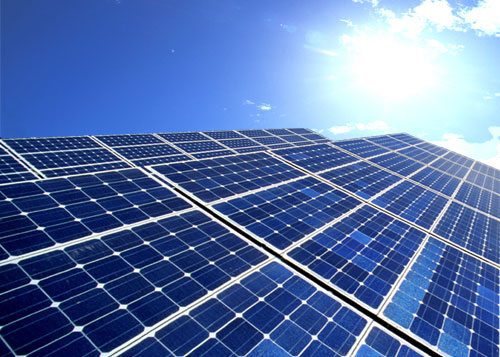
The digital revolution has been called the third biggest revolution following the industrial and the electrical.
Many industries, such as telecommunications, that previously hit a plateau in their technological progress achieved their next leap forward once they integrated digitisation into their solutions. This is because digitisation offers industries many benefits, including cost reduction, increased efficiency, and a faster pace of growth.
The world is going digital – so too should the energy industry – especially the solar energy industry, which can benefit from digitisation in power conversion and monitoring through grid inter connectivity and smart homes. Taking the inverter digital, is key to achieving all of these benefits.
As an example, inverters that leverage new innovative technology that relies more on digitisation can help the solar industry take a large leap forward. One way to digitise inverter technology is to use a novel power conversion process based on distributed multi-level switching in combination with a powerful DSP processor to synthesize a clean sine wave.
This type of innovative inverter technology transfers the conversion process to a digital processor instead of mainly using a mechanical process. This technology not only significantly decreases the inverter size and weight, but it also achieves a new CEC record of a 99% weighted efficiency rating. The reduction of costly components helps lower costs, while improved efficiency increases the amount of energy harvested from a PV system. On a larger scale, the improved power-weight ratio and efficiency play an integral part in reducing the levelised cost of electricity (LCOE) and speeding up the pace towards grid parity.
Besides improving the economics of PV systems, digitisation can also offer increased functionalities. Originally an inverter’s key function was principally for the conversion of DC to AC, but over the years, the inverter’s role has evolved, and today it has become the brain of the system. As such, it manages many more functions, such as monitoring, storage, grid interaction and safety among others. With digitisation, the inverter can become smarter and its role can expand even faster. One of the new areas in which inverters are beginning to manage is in smart buildings.
The inverter already controls PV energy generation, grid interaction, monitors home energy consumption, and manages energy storage. The natural progression is for it to manage device control, and by doing so merge the two separate worlds of solar energy and building automation. Smart homes not only offer improved convenience, but when combined with a PV system, they allow home owners to increase their self-consumption of the solar energy they produce.
Since PV production does not typically match homeowner consumption, smart homes allow for the control of appliances via smartphones and as such direct PV energy to the appliances. This type of energy management requires more processing power due to the increased amount of information and functionality.
The ability to process more information faster is key to this and can only be economically achieved through digitisation. The next step in digitisation after smart homes is the potential to offer many additional benefits such as artificial intelligence, sub-grid/aggregation, and Internet of Things (IoT).
The benefits of digitisation do not stop there. Digitisation of PV systems can potentially revolutionise the energy grid. For nearly a century, our energy generation model of centralised production has remained unchanged. Compared to other industries that have moved past this centralised model, this is a very outdated and inefficient model.
For instance, computing has moved towards a distributed computing or grid computing model, which has improved reliability and service. Digitisation can help move the electric grid in the direction of mini power stations by allowing faster communications and increased functionalities that are essential for a distributed grid infrastructure.
Mini power stations or a distributed grid infrastructure would mean that energy could be produced, stored, and consumed in the same location. In addition, the grid would be able to pull energy from each of the mini power stations when needed, for instance from PV systems or batteries. This would allow for a much more interconnected system.
However, the type of interconnectivity, bidirectional communications, and dynamic responses that are necessary for a smart distributed grid, can only be supported by PV systems that are managed by digital technology and have fast processing power. For the infrastructure to keep up with the modern world and its demands, it will need to change and integrate digital technology.
The key for the solar energy industry to join the digital revolution is through inverter advancement. Over the past 25 years, inverter technology has made limited progress in terms of size, weight, manufacturing costs, and efficiency.
Compared to the computer industry, which has doubled its processing power every 18-24 months, it is no surprise that every home has a computer, but not a solar energy system. However, when inverters, and thus PV systems, are digitised, then their progress will be aligned with Moore’s law, and thus continuous improvement based on increased processing power and silicon integration will be of great benefit to the solar industry.
Lior Handelsman, VP of Marketing and Product Strategy, Founder SolarEdge
Footer
Technologies
